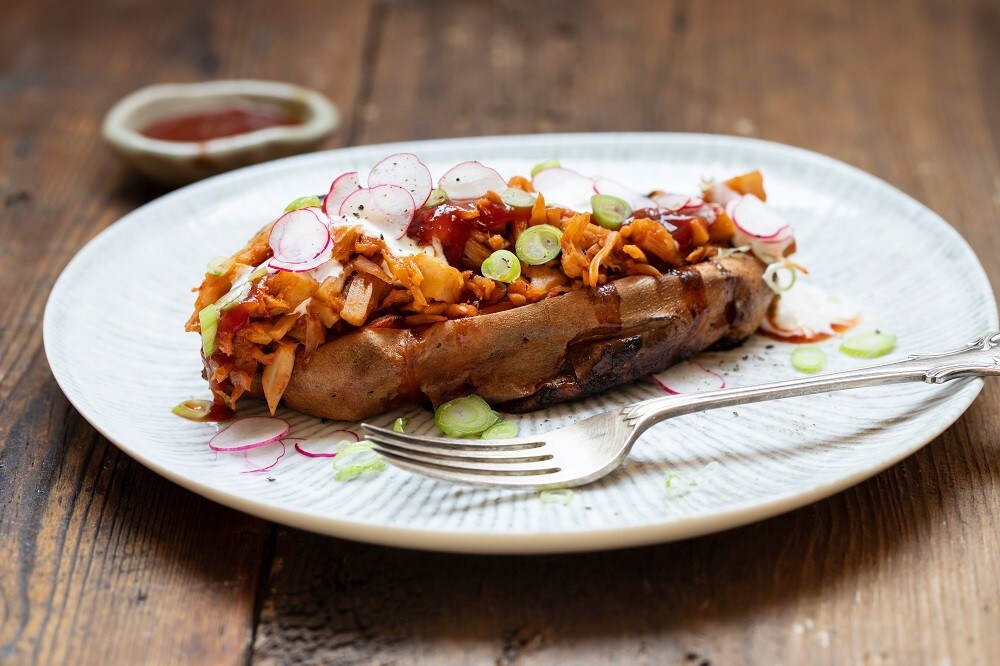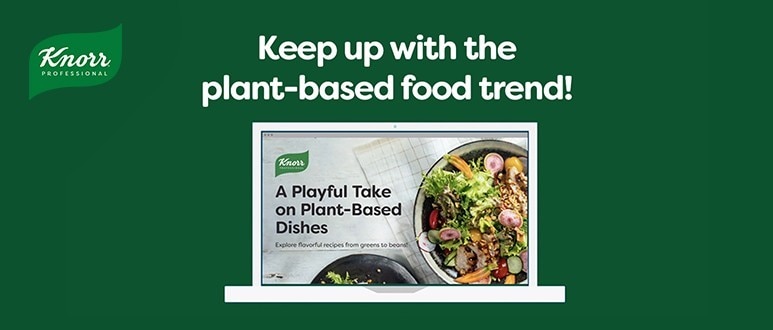Welcome to the plant-based party! Using meat substitutes and healthier protein sources has become a massive cooking and dining trend, and the demand is here to stay.
According to American market research firm NPD, 89% of people who eat and cook with meat substitutes are not strictly vegan or vegetarian. They’re primarily flexitarians – or part-time vegetarians – looking for variety or healthier, more sustainable substitutes. After all, most meat alternatives comprise soy, wheat, bean, and pea proteins. For example, the soy-based The Vegetarian Butcher contains more vitamins than your traditional meat.
The Philippine Statistics Authority also states the Philippines has the highest share of flexitarians in Southeast Asia. Experts forecast that the local plant-based industry can grow as much as 28% this year.
With the larger-scale awareness of questionable meat- and poultry-farming ethics and the drive to reduce carbon footprints propelling the popularity of plant-based options, you must not be left behind. As chefs and restaurants, it’s time you incorporate these meaty non-meat replacements into your menus.
Apart from the environmental and health benefits for the customer, these meat alternatives also offer incentives for you as a business owner. First, you get to capitalize on the trend. Second, plant-based meat substitutes tend to have a longer shelf life and require less prep time. They’re also very versatile, which gives you the freedom to experiment and use them in various dishes.
However, while many plant-based meat options look, feel, and taste like real meat, they’re still not quite the same. They have binders and fat sources that make them different. Read on for some tips and tricks in preparing meat substitutes. We listed our top tips and tricks in preparing and cooking meat substitutes to make them appetizing and flavorful.

1. Take Your Best Pick
Meat alternatives must often be pre-thawed and seasoned like ground beef or pork. Remember to look at the ingredients list to determine both the protein and sodium content of your base and build your serving size and salt content accordingly. Some dietitians recommend 20g of protein per meal and no more than 2,300mg of sodium per day. Since some meat substitutes contain more sodium than real meat, remember to taste as you cook to avoid over-seasoned dishes.
Many famous dining establishments have already showcased the potential of meat substitutes. For example, Pancake House and Burger King feature The Vegetarian Butcher in their plant-based options. Their successes show that you can offer healthier, sustainable options while delivering on flavor.

2. The Maillard Reaction is Everything
When cooking steaks and burgers, browning is the key to getting all that meaty flavor come to the surface. The Maillard reaction is a chemical reaction that occurs when proteins and sugars in and on your food are transformed by heat, producing new flavors, aromas, and colors.
Similarly, how you cook meat substitutes is essential to coaxing all that flavor out. To nail the browning method for plant-based patties, stir-fries, and sausages, turn that heat up and let them sizzle away. Some plant-based meats, like The Vegetarian Butcher, are pre-cooked, reducing your cooking time. Grill, fry, or sauté NoMince, the ground beef alternative, and it can be ready to eat in three to four minutes, while the NoChicken Chunks and NoChicken Burger can be done in six minutes.
Remember that since your base ingredient does not have natural animal fats to help retain the moisture and tenderness over high heat, you must incorporate fat into your alternative meat mix. You can add at least one tablespoon of oil or fat per serving.

3. Kick Up the Umami
Umami is a savory flavor in many ingredients like aged cheese, red wine, balsamic vinegar, soy sauce, and mushrooms. It’s meaty, aromatic, and rich. It’s a necessary flavor profile to bring out when cooking with meat substitutes as it is characteristic of real meat flavors.
Many plant-based meats are already pre-seasoned to cop the taste of their animal-based counterparts. However, you can still incorporate sauces or umami-rich ingredients into your dishes, or opt for versatile seasonings like Knorr Liquid Seasoning and let them work wonders in your cooking like teriyaki-glazed non-chicken or plant-based sisig.

4. Season with Spices
Using meat alternatives doesn't mean compromising flavor. Aroma heightens the taste of any dish and is key to recreating a meat-filled dining experience. Go heavy on herbs, spices, and aromatics to make the flavor shine. Try experimenting with garlic, oregano, fennel, cumin, parsley, cilantro, chili, smoked paprika, thyme, marjoram, sumac, and even pre-packaged spice mixes.
There’s no limit to the spices you can use. You can create the flavors of butter chicken or delicious siomai with plant-based proteins.

5. Lock That Flavor in with the Right Binder
Because binders help with the texture of your food, using the right ones when cooking your meat substitutes can contribute to its thickness and palatability. Some plant-based binders that you can use are seed butter, tapioca starch, and soy protein isolate. Consider stocking up on these so you have them ready for various plant-based or vegan meat recipes.
With the right tools and knowledge for experimentation and recipe development, cooking with meat substitutes can be easy as pie.
